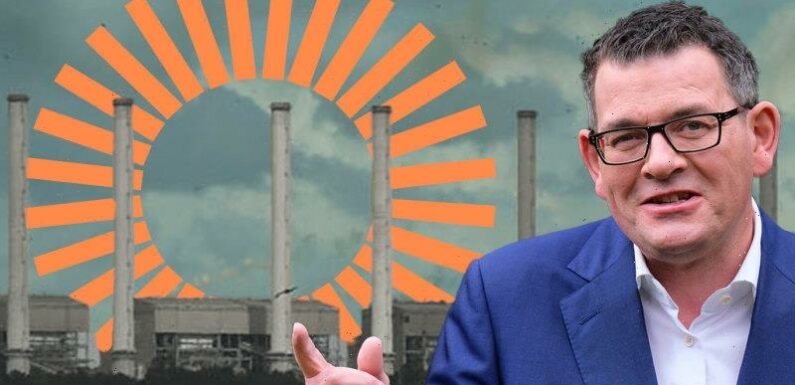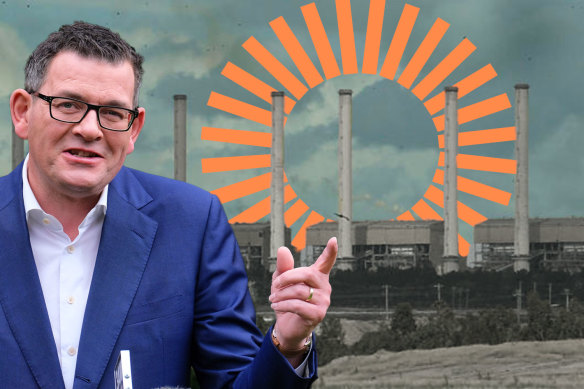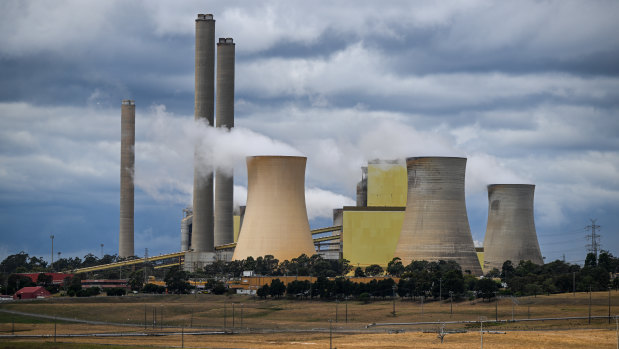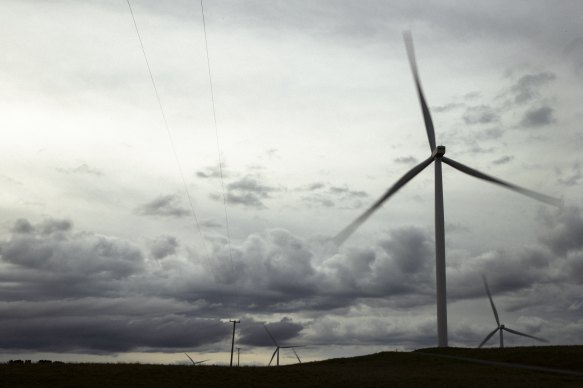
The Albanese government will be asked to help fund Victoria’s resurrected State Electricity Commission under a plan to build a publicly controlled wind or solar energy farm as early as the next state election in 2026.
Official tender documents reveal the government’s ambitious timetable to secure a “suitable co-investor” this year as part of a push to get an SEC-branded renewable energy project up and running within the next three to five years.
Daniel Andrews says the promise of reviving the SEC was key to Labor’s election win in NovemberCredit:Matt Davidson
For the first time, the Commonwealth has been singled out as a potential investor, as the state government ramps up efforts to deliver on its promise to generate 4.5 gigawatts of renewable energy to drive down power prices and claw back energy sector profits ahead of the looming closure of the state’s three remaining brown coal-fired power generators.
In January, the government issued a tender for an investment adviser to help broker a deal to build renewable energy “as quickly as is practicable”.
The documents note that suitable “co-investors” could include “private investors, superannuation funds and the Commonwealth Government”.
“Success for the engagement would be the SEC achieving financial close on an investment this year, with a suitable co-investor, in a renewable project in Victoria that is capable of being delivered in the short to medium term (three to five years),” the documents say.
The Loy Yang power station in the Latrobe Valley.Credit:Joe Armao
“An objective of the SEC’s foundation deal will be to establish SEC’s credibility as a market participant and to quickly build SEC’s commercial capabilities and processes.”
The new details of the state government’s push to re-enter the energy market come as the SEC’s chiefs begin official discussions with major industry super funds, some of whom responded positively when quizzed by The Age about the prospect of partnering with the state government.
In the lead up to the November election, Daniel Andrews-led Labor announced plans to revive Victoria’s old SEC – which was carved up and sold off during the Kennett era of the 1990s.
Labor promised an initial $1 billion investment, which it said would give it a controlling 51 per cent stake, with the remainder to come from like-minded co-investors. At the time, Labor repeatedly pointed to industry superannuation funds as likely partners.
But the details have been sketchy, and it’s not yet clear who the funding partners would be, whether the new-look SEC would have a retail arm and what role, if any, role it would have in distribution.
A sense of urgency around the SEC plan in part reflects concern within senior government ranks that Victoria will face an energy crunch heading into the next election.
The Australian Energy Market Operator last month called for “urgent and ongoing” investment in renewable energy, long-duration storage and transmission, to offset the looming closure of coal-fired power plants across the east-coast grid.
In December Andrews told The Age that the idea of the SEC firmed after AGL announced in September it would bring forward the closure date of its Loy Yang A Power Station in the Latrobe Valley by up to 10 years to 2035.
Labor then made the SEC promise a centrepiece of its election campaign in November, despite opposition accusations the policy was a populist thought bubble. With that in mind, the government will be determined to have concrete developments it can point to by the time of the next election in 2026.
In response to questions to energy minister Lily D’Ambrosio, a government spokeswoman said re-establishing the SEC presented “an enormous opportunity for a wide range of market participants, investors, and potential project partners”.
“It’s great to have a federal Labor government that believes in climate action and the importance of renewables and [we] welcome any potential opportunities that support a thriving and successful SEC,” the spokeswoman said.
A well-placed government insider said, while no formal discussions had yet been held with the Commonwealth, agencies such as the Clean Energy Finance Corporation (CEFC) could be a source of support for the SEC.
While discussions may not have started with the Commonwealth, talks are underway with major industry super funds. Individual funds were reluctant to comment about the prospects of backing the SEC, but their responses to questions from The Age will be viewed as encouraging by the Andrews government.
The SEC’s new chiefs are scheduled to meet mega-fund Australian Super this week. The fund refused to provide public comment.
Construction industry fund Cbus also refused to comment, but a fund insider noted its interest in renewable energy, including its 10 per cent stake in the Star of the South offshore wind farm, south of the Gippsland coast.
The revived SEC may invest in windCredit:Dominic Lorrimer
Health and community service industry fund HESTA has also invested in wind energy. Its portfolio management head Jeff Brunton said HESTA had not yet considered “opportunities related to the Victorian government’s SEC announcement”.
“However, identifying appropriate opportunities emerging from the energy transition globally is an area of focus for HESTA,” Brunton added.
He said any investment in the SEC “would be subject to the same due diligence process as all infrastructure investments to assess whether they were in members’ best financial interests”.
Retail industry fund REST noted that it was the super fund with the largest number of members under the age of 34. “Our members, many of whom are decades from retirement, have much to gain from well thought through investment strategies in national priority areas, including energy transition, housing and infrastructure,” a spokesperson said.
Federal Energy Minster Chris Bowen declined to comment.
The Andrews government is promising to be 65 per cent reliant on renewable energy by 2030 and 95 per cent by 2035, a timeline that would end the state’s century-long reliance on brown coal.
But the push to quickly transition to renewable power follows concerns about the ability of the grid to cope with a surge in variable wind and solar energy, much of which is located in western Victoria, far from the state’s ageing and increasingly unreliable brown coal-fired generators.
The Australian Energy Market Operator has called for thousands of kilometres of new transmission lines, among other technologies to help manage the transition.
Get to the heart of what’s happening with climate change and the environment. Our fortnightly Environment newsletter brings you the news, the issues and the solutions. Sign up here.
Most Viewed in National
From our partners
Source: Read Full Article


